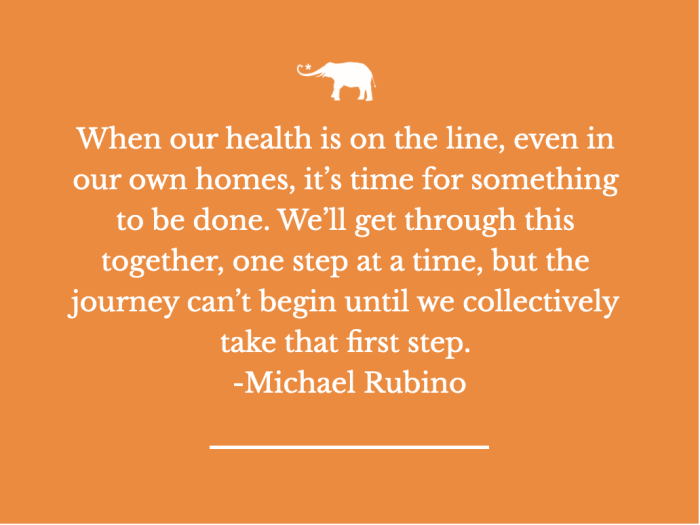Climate change is a contentious topic. There’s no getting around it. There are millions of opinions on what actions should be taken to mitigate the effects, who’s responsible for getting these tasks completed, timelines for when they need to be accomplished, how bad the climate events will actually be… The list goes on. What we do know is that whatever happens, whenever it happens, and however it happens, the health of those around the world will be impacted. The majority of discussions surrounding this health impact involve factors such as outdoor air pollution and catastrophic water events, but what about the environment right inside our own homes? It’s a topic that rarely, if ever, gets brought up, yet it’s a crucial piece of the puzzle in creating action plans regarding climate change and society’s future health.
Indoor Air Quality And Health
We breathe an average of 20,000 breaths per day. When we think of climate change, we often consider the degradation of the atmosphere compounded by outdoor pollution levels and how that impacts our health as we breathe in the toxic air. All of that is incredibly important to consider, and actionable steps should be taken to remedy this situation. What many don’t consider, though, is where the majority of these 20,000 or so breaths are taken. Most of them, most likely, are taken inside our own homes, workplaces, or other types of structures.
That begs the question of what’s inside that indoor air. What particles are making their way straight into our lungs, and sometimes our bloodstream?
As a society, we often neglect to consider how the air we breathe inside can dramatically affect our health. If that air is filled with organic matter such as mold spores, bacteria, or mycotoxins (microscopic toxins produced by some species of mold), those particles are making their way inside of our bodies and have the ability to trigger a long list of adverse health effects. Some individuals are particularly susceptible and may experience symptoms fairly quickly, but any immune system constantly battling a flood of foreign particles has the potential to get bogged down, causing the body to suffer the consequences.
While we’re familiar with carbon monoxide, ozone, secondhand smoke, and asbestos that could be contaminating the air and affecting our health, indoor mold growth has flown under the radar. Yet, it’s becoming increasingly more common and can similarly affect those within the home. As climate change continues to ramp up, this indoor pollutant will be riding the coattails and opportunistically maximizing living in our indoor space.
Climate Change and Mold Growth
Colonized mold reproduces by creating microscopic spores, similar to the seeds plants produce, which it releases into the air. The key to remember here is that the spores are smaller than the natural eye can see. With over 100,000 species of mold identified so far, it’s safe to say that these tiny spores are everywhere.
As a key player in nature, mold and mold spores typically aren’t a problem; even when rogue spores make their way into your car, home, or clothing. The issue arises when a spore finds a habitable area inside of the home, begins to grow, and then starts its life cycle of creating and releasing spores. As mentioned earlier, some species can also create mycotoxins, a toxin the FDA already regulates in our food. These toxins are similarly released into the air alongside the spores. As mold growth continues, more and more of these spores (and sometimes toxins) find their way into the indoor space of the home, drastically decreasing the air quality. More often than not, these spores will stumble upon another habitable area and opportunistically begin growing there as well. Now you’re dealing with two or more spore factories releasing particles into the indoor air you and your family breathe in every single day.
Situations like this can happen in the blink of an eye. Homes are perfect environments for mold growth—there’s oxygen, temperature-controlled rooms, and plenty of food sources. All a spore needs is an area that’s wet or slightly damp for 24–48 hours, which is easy to accomplish in any home. A window left open during a rainy evening, a hidden leak in an attic, a spill not properly cleaned up on the carpet, or high humidity causing condensation are all events that could lead to indoor mold growth.
As climate change continues to affect the planet, it too will create more opportunities for mold to grow. As massive water events such as flooding, tsunamis, hurricanes, tropical storms, and sea-level rise rock the planet, our homes will be much more likely to experience water damage. Whether it’s a leaky roof or a flooded basement, these situations will create prime real estate for mold spores to settle into our homes. Without the infrastructure in place to quickly and properly address these indoor mold growth issues, homes across the world will suffer a dramatic decline in indoor air quality, if they’re not already affected.
Taking Action Now
The best way to tackle this imminent problem is to set the foundation now, not wait until the issue grows out of control. To accomplish this requires a concentrated effort and relationship between homeowners and industries worldwide.
A Homeowner’s Responsibility
Homeowners have a long list of responsibilities when it comes to managing the property, including keeping up the yard work, replacing old appliances, and replacing the air filters, to name a few. What’s rarely included in the list is what to do about mold.
When an individual owns a home or rents the home to others, they need to build a solid mold awareness. Especially as climate change creates more opportunities for mold to grow in the first place. This works in part by forming relationships with related industries, but it should also be an additional aspect of homeowner expectations. These individuals should actively take measures to prevent mold growth in their homes, such as keeping an eye on the roof, installing adequate ventilation, utilizing dehumidifiers, and equipping basements with moisture counter-measures, among others. They should also have a plan in place should a water event occur in the home, whether from a flood or a leaky roof. Taking the proper steps immediately during these situations is the best way to mitigate the damage as well as to handle any mold that may be maximizing the opportunity and beginning to grow.
Apartment building owners also fall into this category as the air quality in their tenants’ apartments can equally be affected by mold growth. Having measures to prevent mold growth as well as plans in place to handle any moldy opportunities is an important consideration now, but will become increasingly important as weather patterns and events continue to change and persist.
Indoor air quality may not be at the top of many homeowners’ lists of things to monitor and maintain, but its ability to affect the health of those living inside should propel it to an area of special interest for society at large.
Industries Involved
A few industries, in particular, have a unique position in helping combat mold growth in homes, particularly as water events triggered by climate change continue to increase across the world.
Insurance companies will be among the first to feel the brunt of climate change-related disasters and the havoc they wreak on homes. Yet, many policyholders have no idea what their mold coverage involves, if it’s included in their policy at all. Taking actionable steps to inform their clients about the dangers of mold, what steps they can do to prevent it in their homes, coverage options that exist, and qualifications for this coverage is a great first step towards helping them prepare for any unfortunate mold event.
Going even further, insurance companies can work on creating better policies by working with experts to understand how mold occurs, how it can impact their clients, and the cost associated with removing mold contamination properly from a home. That way, their client won’t be disheartened with an unexpectedly large bill.
Remediation companies will also be on the front lines of handling the growing indoor mold problem. These companies should be working with scientific research to develop remediation protocols that remove the mold completely, fix the source of the problem that led to the mold growth in the first place, and handle any contamination that exists in the home. Mycotoxins and bacteria, for instance, should be contaminants they look for and know how to properly remove.
At the end of the day, these companies should be well aware of the dangers indoor mold growth can cause to the health of those living inside the home and have plans in place to ensure that when they leave, their customers will be left with a safe, clean, and healthy indoor environment.
The construction industry is tasked with creating buildings that are energy-efficient, but building science also needs to be included in these conversations and plans. Specifically, how they can build homes and processes to adhere to so as to avoid mold growth. While homeowners often think of newly constructed homes as blank slates, that’s been shown to be less and less true. Brand new homes are just as likely to have mold growth impacting the indoor air quality before the homeowner even moves in.
Working with experts in the field can help them come up with strategies to meet the requirements for climate-related actions like energy efficiency while simultaneously avoiding mold growth as well.
These are just a few of the top industries that can work to have a positive impact on creating better indoor air quality for people across the globe. As the climate change battle continues, their jobs will be increasingly important to keeping individuals safe.
Working Together For Change
Climate change is going to change the world. We need to do everything we can to prepare and adapt to what’s to come, but we can’t be blinded by the drastic effects happening to the natural environments around us. Yes, that absolutely needs our attention and action! Indoor environments need to be brought into that discussion as well, so that everyone, everywhere can breathe better.
It will take a concentrated effort from us all to get through this, and it needs to start now. When our health is on the line, even in our own homes, it’s time for something to be done. We’ll get through this together, one step at a time, but the journey can’t begin until we collectively take that first step.
MICHAEL RUBINO is an air quality expert who helps bridge the gap between the air in our homes and its direct impact on our health. Rubino works with over 100 doctors globally to not only raise awareness but also provide solutions to correctly identify and remove the pollutants causing this global health crisis. As President of All American Restoration, Rubino specializes in working with people who are immunocompromised or have acute and sustained reactions to mold exposure and has helped heal over 1,000 families—including celebrities and athletes. He is also a council-certified Mold Remediator by IICRC and ACAC and is a contributing member, sponsor, and speaker for the Indoor Air Quality Association. He is the author of The Mold Medic and a contributor to MindBodyGreen. Rubino has been featured on Gwyneth Paltrow’s The goop Podcast and goop’s website, Brandi Glanville’s Unfiltered podcast, Luke Storey, Forbes, USA Today, and Bloom TV, to name a few. He hosts the YouTube series, Mold Talks, where guests include medical experts as well as mold recovery patients, including media icon Atoosa Rubenstein.


 Share on bsky
Share on bsky





Read 0 comments and reply